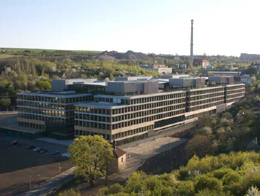
ČT: film about the transformation of the Radlické Valley during the construction of ČSOB
 |
The site where the bank now stands was, according to Šandová, previously more of a piece of nature, with only a metro station there and one of the outbound roads from Prague passing through it. Now, there is a bank building, new shops are emerging, a new square is being created, and a terminal station for trams is under construction.
Šandová and her team have condensed the story of four years, during which the change is evident, into a documentary lasting one hour. "The transformation is fascinating. I think we live in a time of transformations - a person walks down the street and in a year, everything is different. The film also tries in some way to reflect the time of transformation in which we live," Šandová told ČTK.
The new headquarters, designed by architect Josef Pleskot, cost ČSOB 2.7 billion crowns, and the money was obtained by selling its previous buildings in the center of Prague. It moved in last April. The building, which according to some evaluations is one of the most environmentally friendly in all of Europe, has a total area of 82,000 square meters. This corresponds to about a third of Wenceslas Square.
The documentary also features long-time residents of Radlice, who have lived in the area for decades and even have their gardens there. One of them, Václav Till, has documented the appearance of Radlice with a camera for fifty years. Eventually, he changes his view of the new building from initial discontent to the opinion that he likes its final form.
"The building, like most modern architecture, attracts criticism and resistance, perhaps precisely because, in its raw construction stage, it seemed like a huge concrete monster that would flood the valley with a massive amount of concrete, which could never be removed," says Šandová, who has long been engaged in the connection between documentary and architecture. However, she believes that the architect and investor have tried to give the building a human scale, for example, by having a wooden façade, being low-rise, and having a large park on the roof of the building.
"It is quite a radical response to how to build administrative buildings in Prague, because we are witnessing a large discussion about whether to build skyscrapers. It is a very radical response to not build skyscrapers, but rather a structure that is environmentally friendly and favorable to people," added Šandová.
The English translation is powered by AI tool. Switch to Czech to view the original text source.
3 comments
add comment
Subject
Author
Date
Jak jsou na tom úředníci?
Katka Havlová
19.03.08 03:03
úředníci
nimerha
22.03.08 12:35
link
vitt
30.03.08 11:42
show all comments











